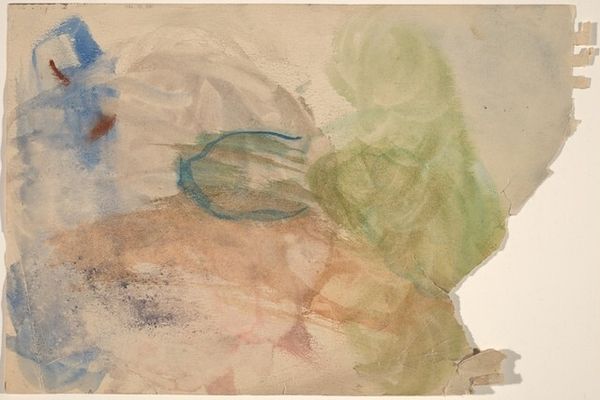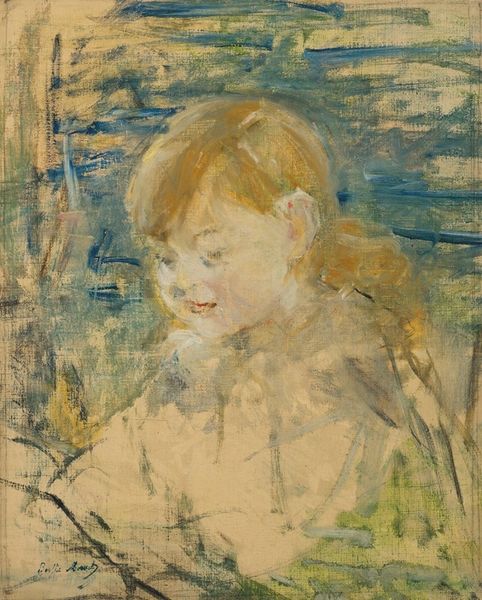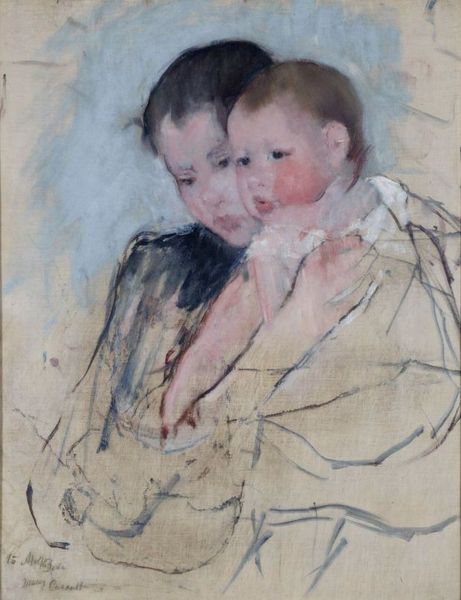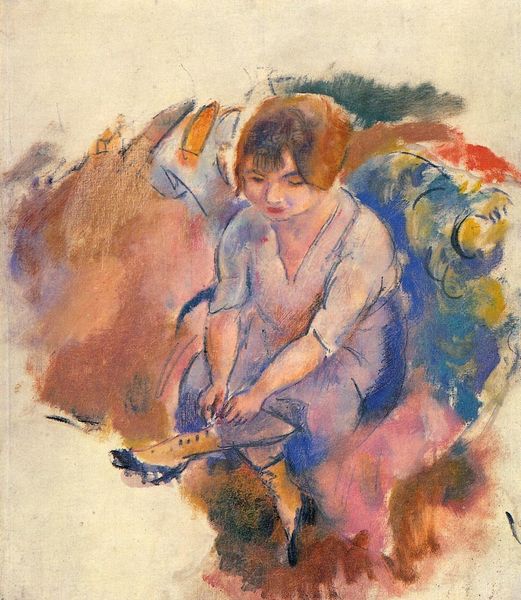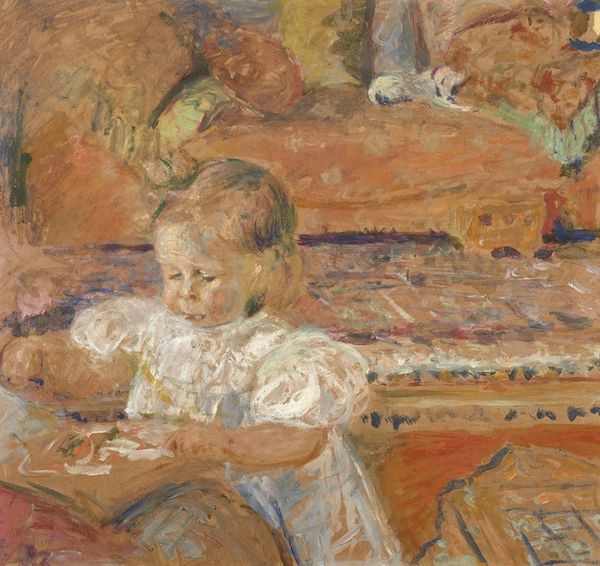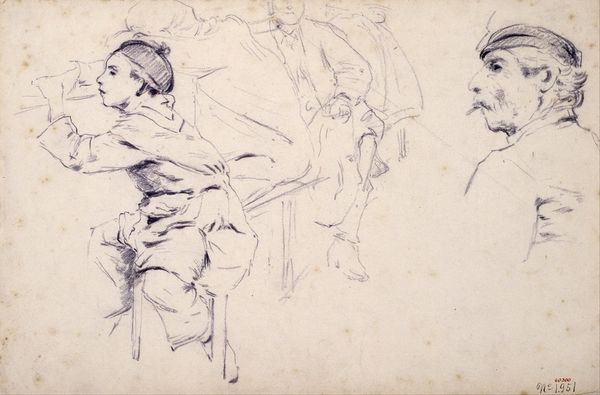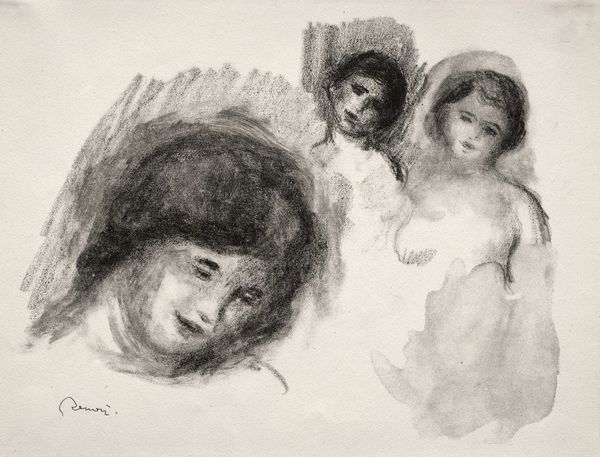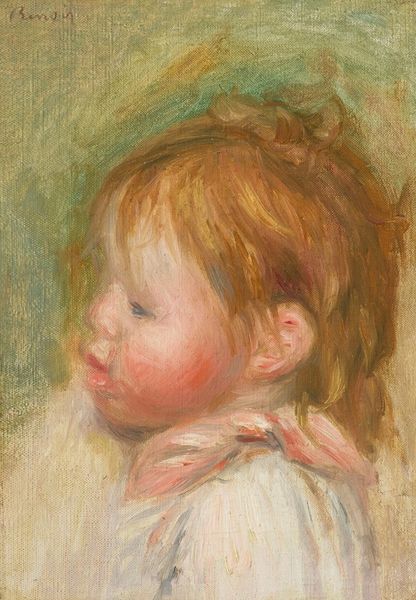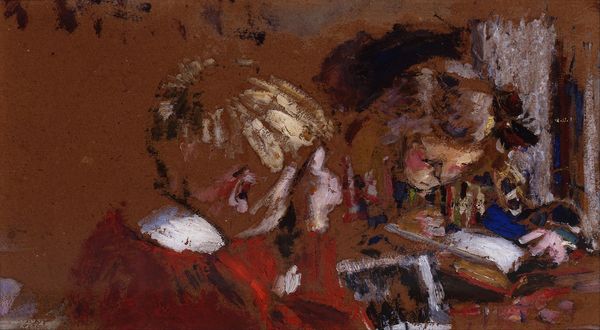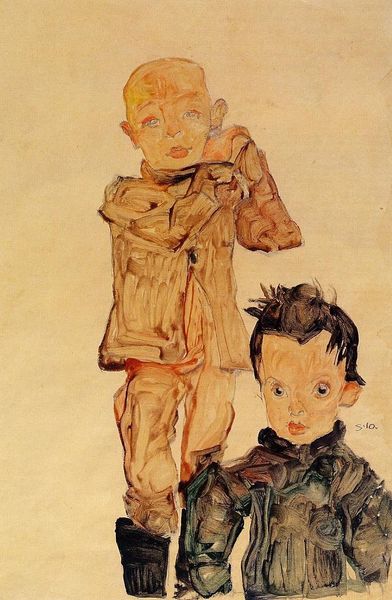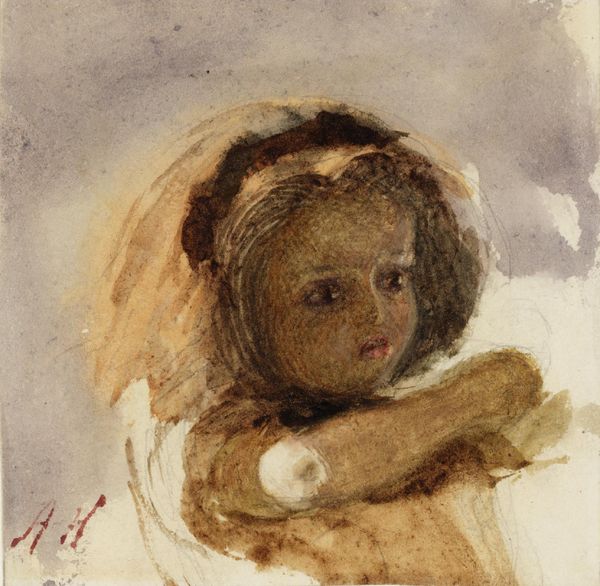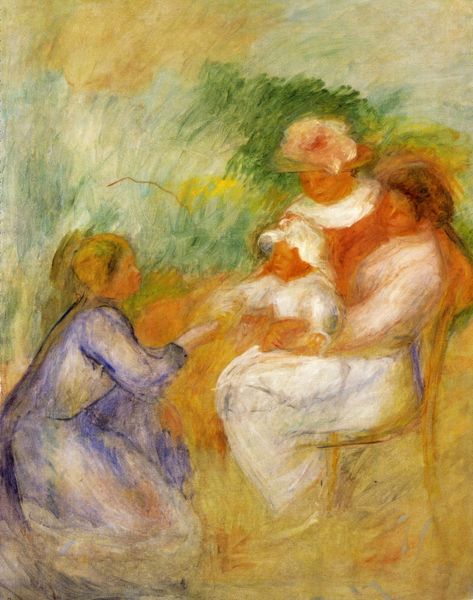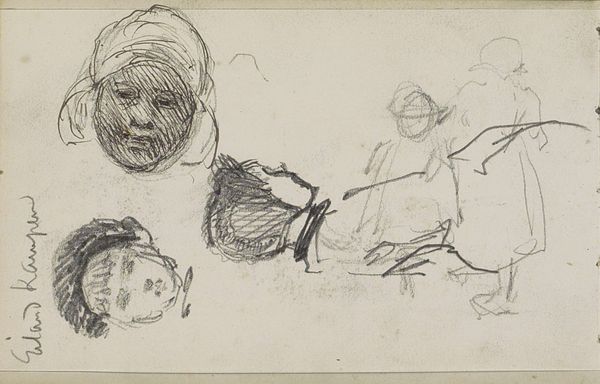
Copyright: Public domain
Curator: This is Pierre-Auguste Renoir's "Study for Girls Playing with a Shuttlecock," painted around 1887, and currently in a private collection. What's your first impression? Editor: Fleeting. The rough strokes give an almost photographic impression of movement. It looks incomplete but captured the essence of girlhood perfectly. Curator: Renoir was deeply interested in portraying modern life and leisure, especially scenes involving women. The shuttlecock itself, the equipment of this game, speaks to an emerging culture of organized recreation available to young women during the late 19th century. Think about who was involved in its manufacture. Editor: I immediately notice the way Renoir contrasts the focused concentration of the girl playing shuttlecock with the detached gaze of the study head floating above. Is this intended as contrasting depictions, of innocent concentration against idle contemplation? Curator: Perhaps. The sketchy, impressionistic application emphasizes spontaneity, giving precedence to immediacy. These were very calculated decisions, from the ground linen being used to the paint layering of colours upon colours. The very production methods reflect a change in the art world, away from very finished works being preferable. Editor: And the use of light here! It softens the hard edges, obscuring the specific attributes of class or environment, inviting a more universal association. The fruit on the lower right. Are those allusions? Curator: Certainly. Notice that Renoir, through these brushstrokes, gives us glimpses of new social behaviours, with working-class girls and women more visibily present within social activity. This links directly into the economy of Parisian pleasure in those times. Editor: It speaks volumes about leisure as an act of creativity. I am seeing a portrait of human energy at its finest. A beautiful record that evokes its historical period while still captivating viewers today. Curator: Yes, seeing Renoir contextualised to new historical information makes me view it again in new lights. Editor: Precisely! I leave it feeling intrigued by the continuing echoes of social structures, how people continue the act of engaging the everyday and seeing if it remains potent after all this time.
Comments
No comments
Be the first to comment and join the conversation on the ultimate creative platform.

